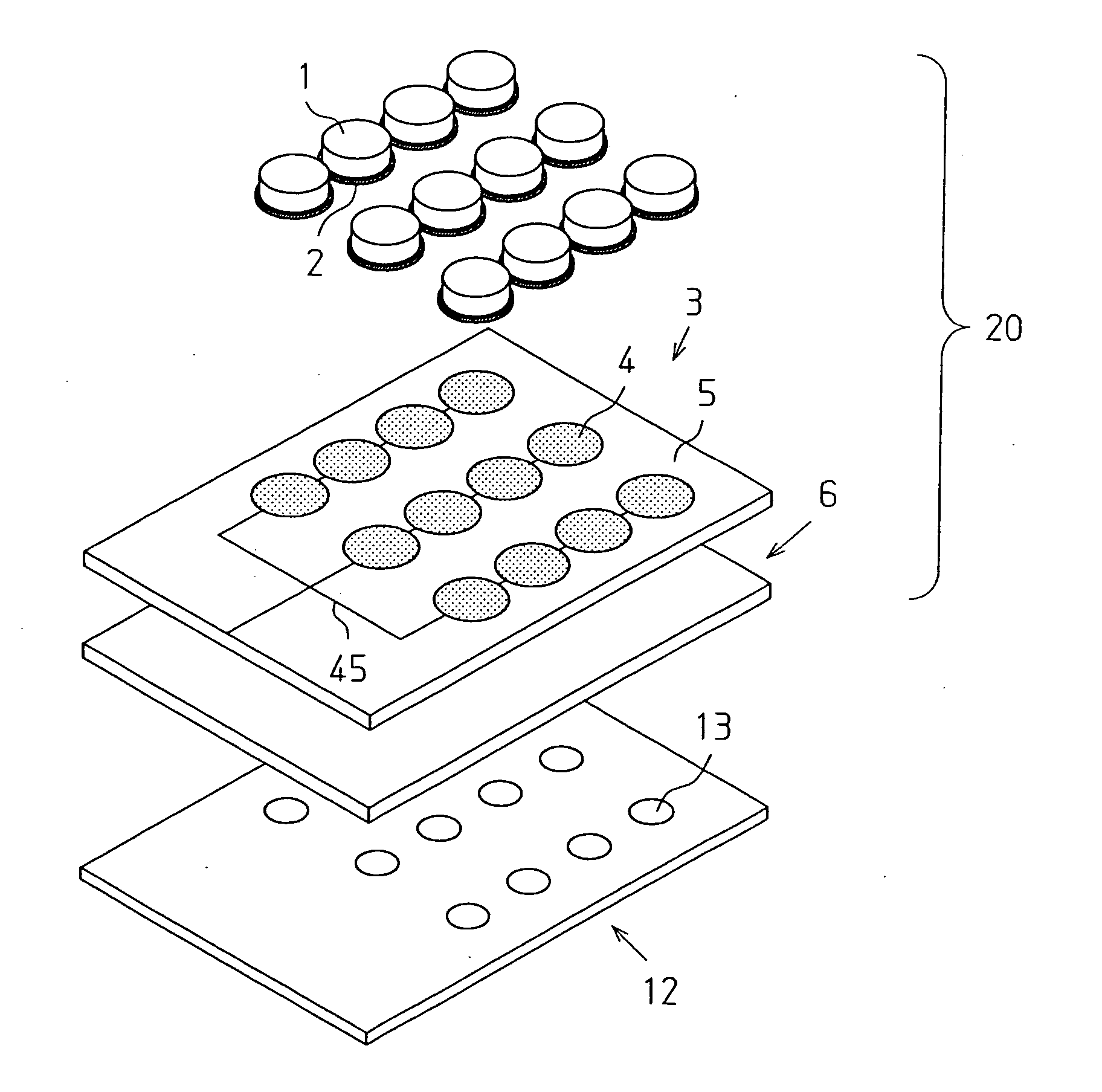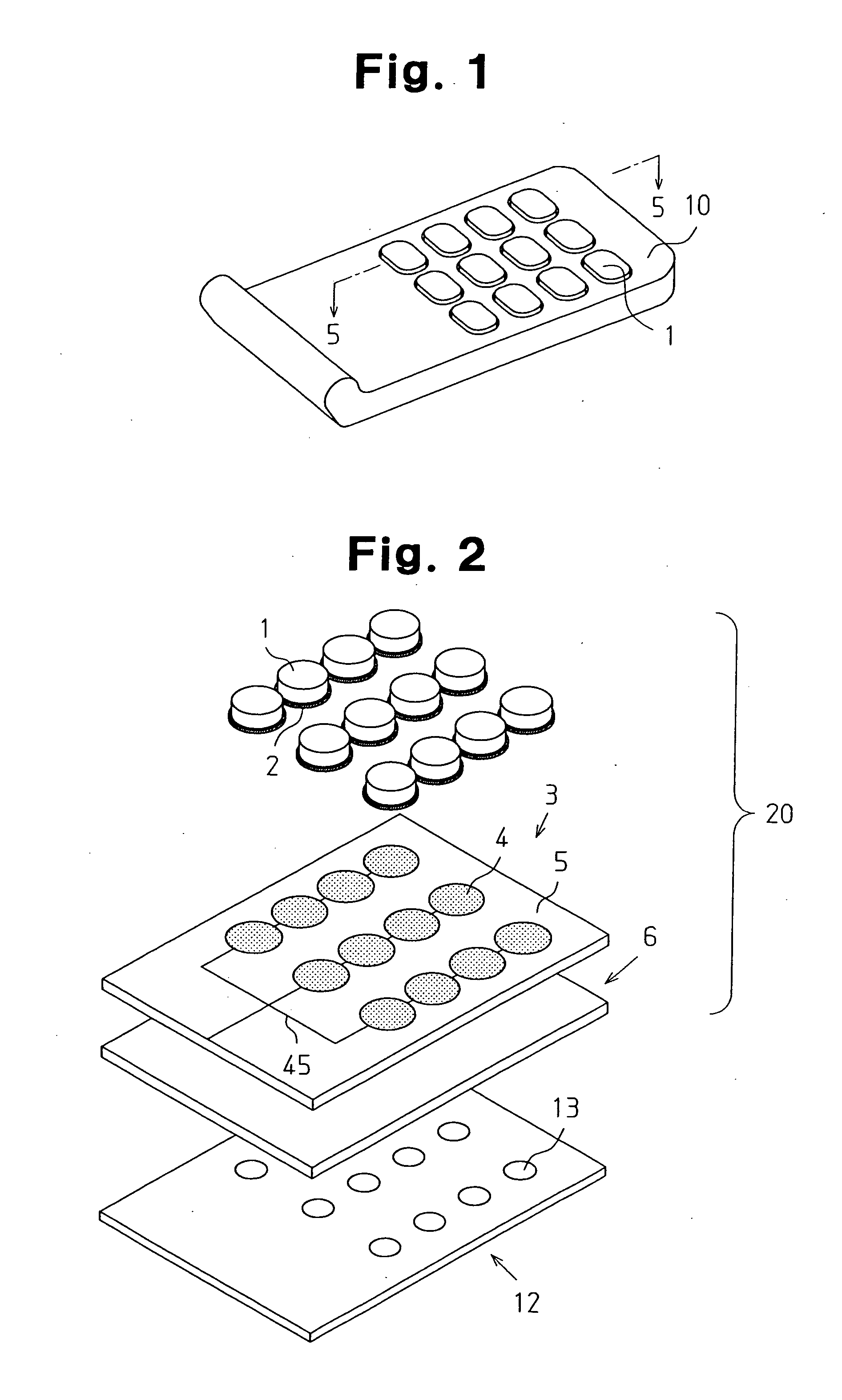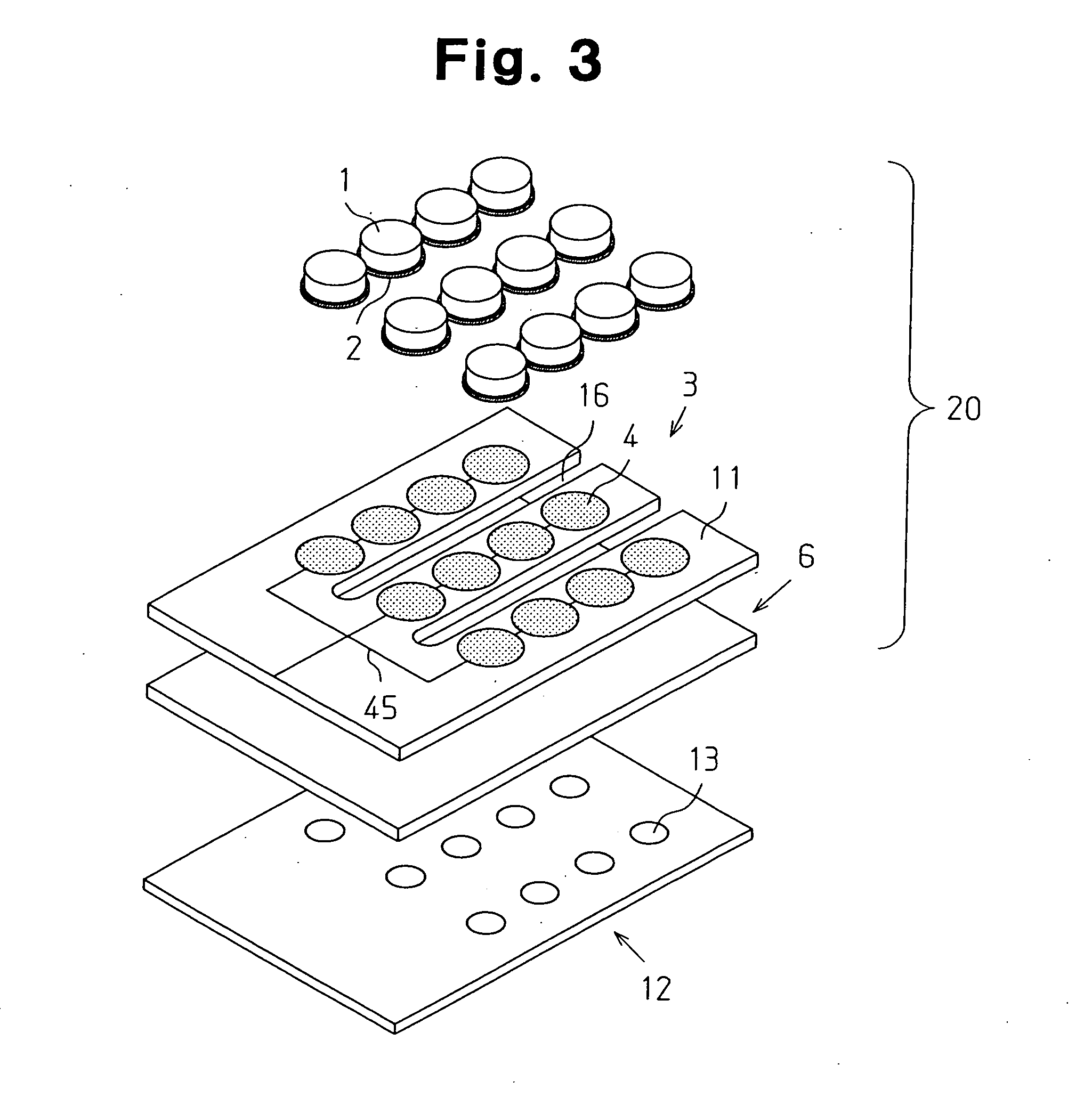Light emitting electronic component
- Summary
- Abstract
- Description
- Claims
- Application Information
AI Technical Summary
Benefits of technology
Problems solved by technology
Method used
Image
Examples
example 1
[0055] The translucent molding 1 shown in FIG. 4 is fabricated by injection molding of polycarbonate resin which transmits visible rays. The indicator layer 2 is formed on the bottom surface of the translucent molding 1 by printing light transmitting ink.
[0056] An ITO film (manufactured by Oji Tobi Co., OTEC-120), which comprises the film substrate 11, and an ITO thin film provided thereon to be used as the transparent electrode 41 was prepared. The emitting layer 42 was printed from a blue green colored fluorescent paste (manufactured by DuPont, 7151) and the dielectric layer 43 was printed from a dielectric paste (manufactured by DuPont). The backside electrode layer 44 was formed by thermocompression of an aluminum foil having 0.025 mm thickness. Then the insulative resist layer 46 was provided to cover the electrode. The EL panel 3 was thereby fabricated with the light emitting portion 4.
[0057] The vibration absorbing sheet comprising silicone rubber and having a semi-spherica...
example 2
[0062] The translucent molding 1 shown in FIG. 3 was fabricated by injection molding of visible light transparent polycarbonate resin in a similar manner as Example 1. The indicator layer 2 was formed by printing light transmitting paint on the bottom surface of the translucent molding 1.
[0063] The method for producing the EL panel 3 having the EL light emitting portions 4 shown in FIG. 8(a) is described as follows. The EL panel 3 was fabricated by using a fluoride resin plate for providing sufficient strength during process steps. The fluoride resin plate is removed from the EL panel 3 after completing fabrication. In order to form the light emitting portion 4 in the same shape as the contour of the bottom surface of the translucent molding 1 over the fluoride resin plate, the transparent electrode layer 41 was formed from an ITO paste for transparent electrodes (manufactured by DuPont), the emitting layer 42 was formed from blue-green colored fluorescent paste (manufactured by Du...
example 3
[0068]FIG. 8(c) is referred to. The key pad of Example 3 was formed similarly to that of Example 2 except that the structure of the EL panel 3 differs in Example 3. The EL panel 3 of Example 3 uses a resin film 11 comprising polyethylene terephthalate having flexibility and an insulative property for the substrate and the substrate was not removed after finishing the EL panel 3.
[0069] The method for producing the EL panel 3 is described below. The transparent electrode layer 41 of the EL light emitting portion 4 was formed by etching the ITO film (manufactured by Oji Tobi Co. under the trade name of OTEC-120) formed on one surface of the substrate. The emitting layer 42 was formed by blue green color fluorescent paste (manufactured by Fujikura Kasei), the dielectric layer 43 was formed by a dielectric paste (manufactured by Fujikura Kasei) and the backside electrode layer 44 was formed by paste for carbon electrodes (manufactured by Fujikura Kasei) in this order to form a plurality...
PUM
 Login to View More
Login to View More Abstract
Description
Claims
Application Information
 Login to View More
Login to View More - R&D
- Intellectual Property
- Life Sciences
- Materials
- Tech Scout
- Unparalleled Data Quality
- Higher Quality Content
- 60% Fewer Hallucinations
Browse by: Latest US Patents, China's latest patents, Technical Efficacy Thesaurus, Application Domain, Technology Topic, Popular Technical Reports.
© 2025 PatSnap. All rights reserved.Legal|Privacy policy|Modern Slavery Act Transparency Statement|Sitemap|About US| Contact US: help@patsnap.com



